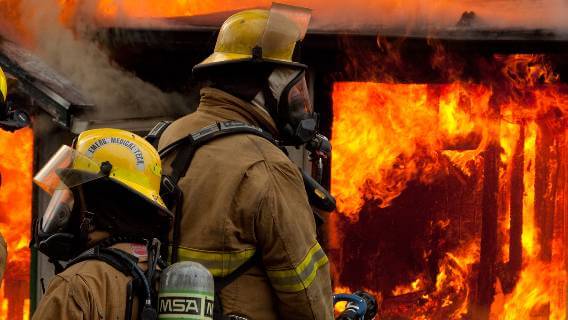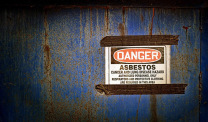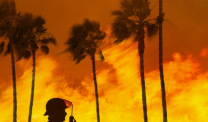WHO Reclassifies Firefighting as High-Risk Occupation for Cancer
Asbestos Exposure & BansWritten by Tim Povtak | Edited By Walter Pacheco

The World Health Organization has reclassified firefighting to its highest level of occupational risk for cancer after extensive research confirmed an alarming level of malignant mesothelioma incidence.
The International Agency for Research on Cancer, which is part of WHO, found that firefighters had a 58% higher risk than the general population of developing mesothelioma, a rare cancer caused by exposure to asbestos fibers.
These findings led to the occupation being reclassified recently as “carcinogenic to humans,” earning it Group 1 status for cancer risk and confirming what many already believed.
“This really is a tragic moment – knowing for sure now that we’ve been working in such hazardous conditions,” said Canadian firefighter Alex Forrest, the only nonmedical, nonscientist on the IARC Working Group panel that submitted the report to WHO. “But this is also a historic moment, because we cannot fix a problem until we all agree that the problem exists.”
8 Countries Represented in IARC Study
Prior to this recent report, first published online by Lancet Oncology June 30, firefighting was classified in Group 2B as “possibly carcinogenic.”
“I had to take off my firefighter helmet and put on my medical community hat to do what I could to convince the working group to change the classification,” said Forrest, who believes the formal consensus will make it a safer profession.
In addition to Forrest, IARC’s research involved 24 scientists and medical professionals from eight different countries. It included four people from the U.S., representing the National Institute for Occupational Safety and Health and the National Cancer Institute.
This latest evaluation stemmed from 52 cohort and case-controlled studies and 12 case reports. More than 30 cohort studies following firefighters over time were conducted, spanning North America, Europe and Asia.
“The Working Group concluded that there was sufficient evidence in humans for mesothelioma and bladder cancer,” the authors wrote. “There was ‘limited’ evidence in humans for colon, prostate and testicular cancers, and for melanoma and non-Hodgkin lymphoma.”
Although there were positive and credible associations seen for those five types with “limited” evidence, lifestyle or physical characteristics could have influenced the malignancies, according to the study.
Mesothelioma Most Obvious Cancer Risk
The research involved seven studies specifically examining mesothelioma incidence in firefighters, leading to the 58% higher risk statistic. Surprisingly, there was a much lower risk for lung cancer among firefighters.
“The human cancer evidence for all other cancer types was ‘inadequate.’ Lung cancer incidence and mortality rates were lower among firefighters than in the general population in most studies, and in the meta-analysis,” the authors wrote.
Evidence of mesothelioma prevalence was no surprise, particularly for those fighting fires in older commercial and residential structures where asbestos-containing materials were used throughout.
Asbestos, despite its toxicity, was used to strengthen and resist heat in all kinds of building materials. It was used in insulation, cement floors, roof shingles, siding, wall panels and ceiling tiles, among other products.
Despite an emphasis on improving personal protective equipment for firefighters throughout the past 20 years, exposure to asbestos fibers and other toxic chemicals still occurs on the job.
When buildings are burning, asbestos-containing materials release intense concentrations of the toxic mineral fibers into the air, where they linger for long periods of time.
Many of those being diagnosed with mesothelioma today could have been exposed decades ago because of the long latency period of this rare cancer, which can be between 20 and 60 years.
More Presumptive Asbestos Laws Coming
The new worldwide classification is expected to intensify the fight against cancer within the occupation, leading to more presumptive laws and making it easier for those injured to be adequately compensated for mesothelioma, particularly in countries where the issue is not closely followed.
Within the U.S., laws vary by state over the type of workers’ compensation firefighters can receive. The Occupational Health and Safety Administration concluded almost a decade ago that firefighters were more than twice as likely to develop mesothelioma than the general population.
Not all states, though, include cancers officially as an occupational disease for firefighters.
In Florida, legislation was passed in 2019 that extended health care benefits to firefighters diagnosed with 21 different types of cancer.
A year later, Florida passed additional legislation that provided more funding for departments throughout the state to buy high-tech equipment to better protect its firefighters and reduce exposure from cancer-causing contaminants such as asbestos.






